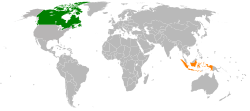Mathletics has been a great place to start the learning process. Although it can frustrate some kids to get the answer wrong, they learn to look at what the right answer was and learn from their mistake. That is an advantage that worksheets can never give - instant feedback.
We tried drawing the solids but found it difficult to represent an object with three dimensions (3D) on a piece of paper or the Smartboard. It would be much easier to build models using marshmallows and toothpicks.
We have used the real 3D objects to talk about faces, edges and vertices. It helps by using our models to see the vertices ( also called corners) when there is a marshmallow at each one! The edges are created with toothpicks. The face is when you can sit it down flat.

We were able to make cubes,
triangular prisms,
rectangular prisms,
square based pyramids and
We were not able to use these materials to make cones, cylinders or spheres. Can you guess why?
As you may have guessed, the best part was being able to eat some of the materials when we were finished!






























